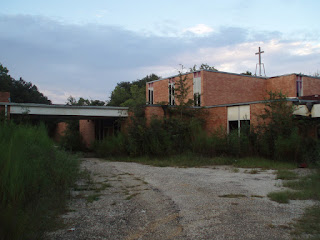 |
| Photo courtesy of www.nsula.edu |
444 Caspari St.
Natchitoches, LA 71457
31.752189,-93.092839
When people are asked what is the oldest city in Louisiana, many would assume New Orleans. Surprisingly it's not, as Natchitoches is the oldest settled area in the state, being established in 1714 by Louis Juchereau de St. Denis. New Orleans was settled shortly thereafter in 1718. This being the case, the much smaller city of Natchitoches can boast a dense list of historical locations. Such can be found within its local college, whose mascot is ironically named “Vic the Demon”!
 |
| The Original Bullard Mansion (Note the columns) |




































